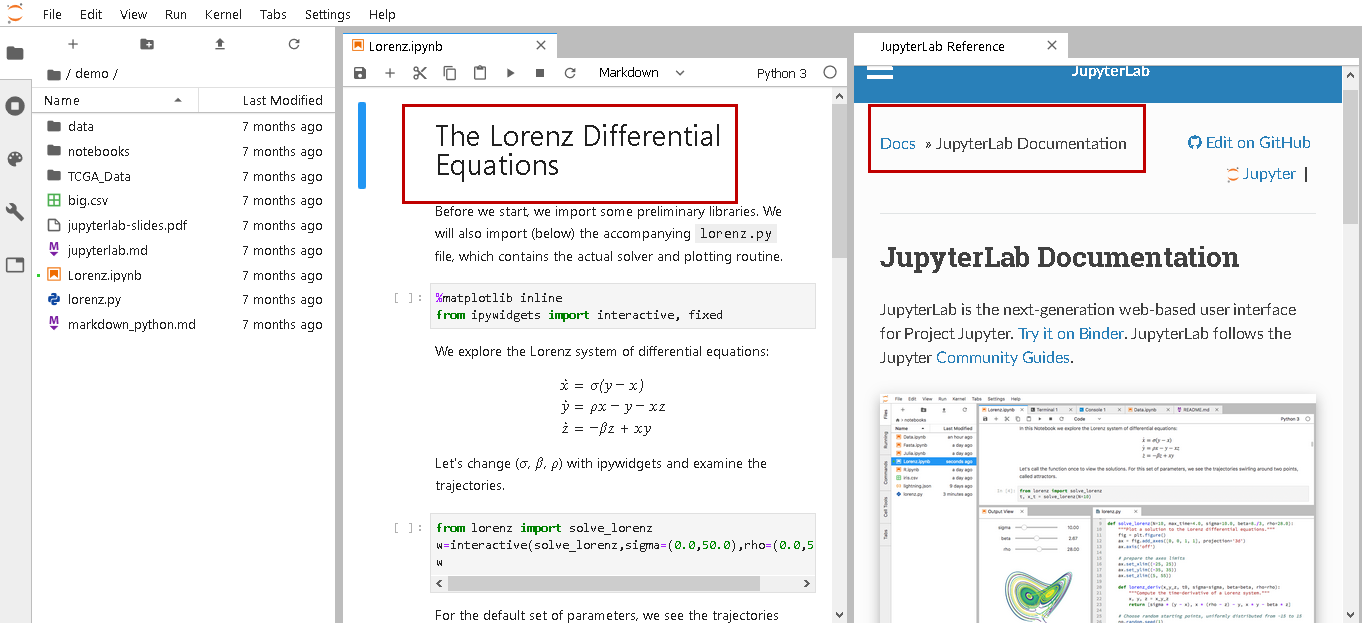
- Pip install jupyter notebook while running how to#
- Pip install jupyter notebook while running update#
- Pip install jupyter notebook while running full#
- Pip install jupyter notebook while running code#
- Pip install jupyter notebook while running password#
Pip install jupyter notebook while running password#
They can be selectors of pre-existing lists, or can accept free text (or password text). Widgets can represent numerical, boolean, or text values. Since most of us are familiar with forms in our web browsers, it makes sense to think about widgets as parts of typical forms. In this article you will learn enough about widgets to build a form and dynamically show the results. Instead, we can use widgets to make a form that allows this interaction to be executed visually. Now what if someone wanted to be able to run this report for different zip codes, looking at different columns, and sorting by other columns? The user would have to be comfortable editing the cell above, rerunning it, and maybe executing other cells to look for the column names and other values. df.loc = zips].sort_values(by='LICENSE TERM EXPIRATION DATE', ascending=False)]
Pip install jupyter notebook while running code#
For example, in this data set we can take the top zip code and look at a few columns like this. This would be a pretty simple (even if somewhat messy) expression in pandas. Now, a reasonable scenario for filtering data might be create a report filtering by zip code, showing the legal name and address of a business, ordered by expiration date of the license. zips = df.groupby('ZIP CODE').count().sort_values(ascending=False) For our smaller data set, let’s just grab the zip codes that have 20 or more businesses. import pandas as pdĭf].head()Īs we can see from the data, the business activity is pretty verbose, but the zip code is an easy way to do some simple searches and filters of data. You can download a notebook of this article here. While this article shows the output, the best way to experience widgets is to interact with them in your own environment.

Note: all of this code was written in a Jupyter notebook using Python 3.8.6.
Pip install jupyter notebook while running how to#
Check the documentation on how to to grab all the data. Note that if you just run the code as below, you’ll only get 1000 rows of data. Let’s grab some data from the Chicago Data Portal – specifically their dataset of current active business licenses. Then we’ll use widgets to make a more interactive version of some of this data exploration. Instead of going through all the widgets and getting into details right away, let’s grab some interesting data and explore it manually. This should be all that you need to do in most situations to get things running.

Or for conda conda install -c conda-forge ipywidgets But for a basic install, just use pip pip install ipywidgets For older Jupyter and JupyterLab installs, make sure to check the details in the docs. This will depend a bit on which Jupyter environment you are using. Getting startedįirst, you need to make sure that ipywidgets is installed in your environment.
Pip install jupyter notebook while running update#
The widgets can execute code on certain actions, allowing you to update cells without a user having to re-execute them or even modify any code. These components allow a user to interact with the widgets.

Jupyter widgets are special bits of code that will embed JavaScript and html in your notebook and present a visual representation in your brower when executed in a notebook. I’ll show you the basics in this article of building a few simple forms to view and analyze some data. This is possible with ipywidgets, also known just as widgets.
Pip install jupyter notebook while running full#
It turns out you can do this pretty easily right in Jupyter, without creating a full webapp. What if you could just give the user a simple form, with a button, and they could modify the form and see the results they want? They may work great for the original developer of a notebook, but allowing a user who doesn’t undestand Python syntax to modify variables and re-execute cells may not be the best option.

Those options are also prone to typing errors or lots of extra editing work. These all are non-ideal if we want quick interaction and the ability to explore the data.


 0 kommentar(er)
0 kommentar(er)
